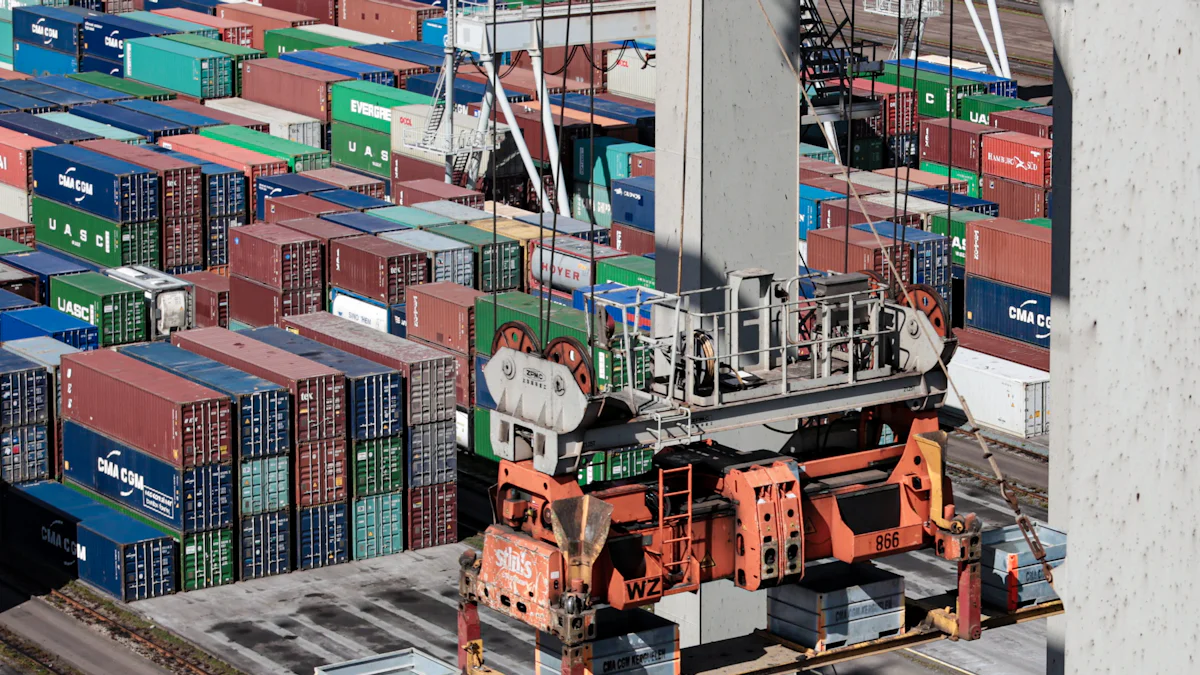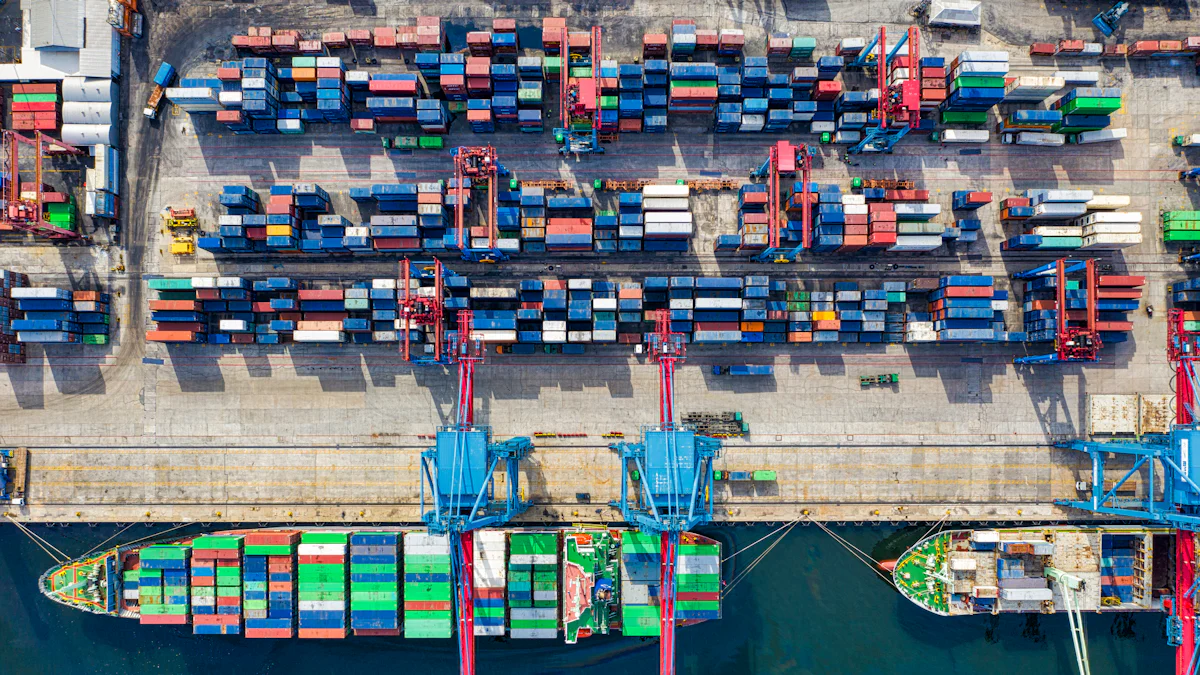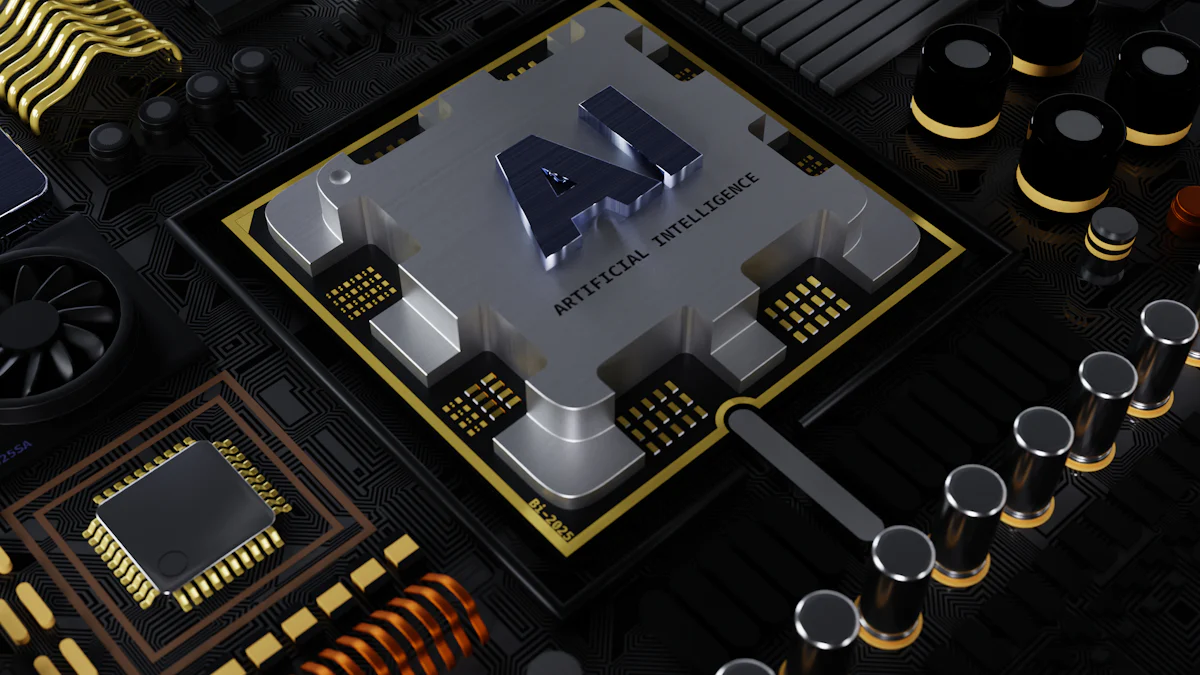Exploring Solutions for Electronic Components Logistics Supply Chain

Efficient logistics play a crucial role in the electronics industry. Companies face challenges like high freight rates, which increase transportation costs and reduce profit margins. The electronic components logistics supply chain ensures that manufacturers receive parts on time. This supply chain uses innovative solutions to optimize processes. For example, AI technology reduces logistics costs by 15% and optimizes inventory levels by 35%. Data analytics integration boosts efficiency by 10% or more. These advancements highlight the importance of Electronic Components Logistics Supply Chain Solutions in maintaining smooth operations and meeting market demands.
Challenges in the Electronic Components Logistics Supply Chain

Demand Fluctuations
Demand fluctuations create a whirlwind in inventory management. Companies often struggle to balance stock levels. Too much inventory ties up capital. Too little leads to missed sales opportunities. The electronics industry faces unpredictable demand patterns. This unpredictability stems from rapid technological advancements and changing consumer preferences.
Strategies exist to mitigate demand variability. Businesses can adopt flexible manufacturing processes. These processes allow quick adjustments to production volumes. Data analytics plays a crucial role here. Analytics tools forecast demand more accurately. Companies can also collaborate closely with suppliers. This collaboration ensures better alignment with market needs.
Freight Capacity Issues
Freight capacity issues pose another significant challenge. Limited transportation options often lead to delays. These delays disrupt the entire supply chain. High freight rates further complicate matters. Increased costs squeeze profit margins. Electronics companies need efficient logistics solutions.
Solutions to optimize freight capacity are available. Companies can diversify their transportation networks. This diversification reduces reliance on a single mode of transport. Advanced planning tools help optimize routes and schedules. These tools ensure timely deliveries and cost savings. Partnerships with logistics providers enhance flexibility. Providers offer tailored solutions for specific needs.
Trade Tensions
Trade tensions affect global supply chains significantly. Tariffs and regulations create barriers. These barriers increase costs and complexity. Electronics companies face challenges in navigating these obstacles. The global nature of the electronics industry amplifies the impact.
Navigating trade regulations and tariffs requires strategic planning. Companies must stay informed about policy changes. Engaging with trade experts provides valuable insights. Experts help businesses understand compliance requirements. Diversifying supply sources reduces dependency on specific regions. This diversification minimizes risks associated with trade tensions.
Electronic Components Logistics Supply Chain Solutions

Innovative Solutions and Technologies
The world of electronic components logistics supply chain solutions is buzzing with innovation. New technologies are transforming how businesses manage logistics. Companies are embracing these changes to stay ahead in the competitive electronics market.
Automated Platforms
Automated platforms are revolutionizing logistics. These platforms streamline operations and reduce human error. Businesses use them to manage inventory and track shipments. Automation ensures accuracy and efficiency. Real-time data updates keep everyone informed. This transparency helps in making quick decisions. Automated platforms also save time and resources. Companies can focus on other critical areas by relying on automation.
AI Integration
AI integration is another game-changer in logistics. Artificial intelligence enhances decision-making processes. Companies use AI to predict demand and optimize routes. This technology improves inventory management. AI analyzes vast amounts of data quickly. Businesses gain insights into customer behavior and market trends. These insights lead to better planning and execution. AI integration boosts overall efficiency in the supply chain.
Customized Logistics Solutions
Customized logistics solutions cater to specific business needs. Companies require tailored strategies for unique challenges. Customization allows flexibility in operations. Businesses can adapt to changing demands easily. Expert teams design these solutions for maximum impact. They consider factors like product type and delivery timelines. Customized logistics solutions ensure smooth operations. Companies achieve their goals with precision and effectiveness.
In the fast-paced electronics industry, staying updated with technological trends is crucial. Sejal Desai, an expert in supply chain management, emphasizes the importance of agile practices. She states,
"Agile supply chain management practices, continuous monitoring of technological trends, and strategic partnerships with technology providers are essential strategies to navigate the ever-evolving landscape of electronic advancements."
This insight highlights the need for businesses to adopt innovative solutions. Electronic components logistics supply chain solutions offer a pathway to success. Companies that embrace these technologies will thrive in the dynamic market.
Modern Distribution Operations
Streamlining Distribution Processes
Efficient distribution networks form the backbone of successful logistics operations. Companies need to ensure that products move smoothly from warehouses to customers. A well-organized network reduces delays and minimizes costs. Businesses can achieve this by optimizing routes and schedules. Advanced technologies play a crucial role in enhancing distribution efficiency.
Technologies Improving Distribution Efficiency:
AI and Machine Learning (ML): These technologies analyze vast amounts of data. They predict demand and optimize routes. AI and ML improve overall supply chain efficiency.
Digital Twins: Companies like DHL use digital twins to optimize warehouse operations. This technology provides real-time insights and process optimization.
IoT Systems: IoT systems feed data into AI-led automation. This helps identify upcoming demand fluctuations. Companies can prevent shortages or overstocking with this information.
Seamless Supply Chain Coordination
Coordination between suppliers and distributors ensures a smooth supply chain. Effective communication helps align production with demand. Companies need to maintain strong relationships with their partners. This collaboration leads to better decision-making and improved efficiency.
Tools for Enhancing Supply Chain Visibility:
Visibility Platforms: Platforms like Project44 and FourKites offer valuable insights. They help companies access data needed for sustainable operations.
Integrated Systems: Integrating Warehouse Management Systems (WMS) and Enterprise Resource Planning (ERP) systems enhances data flow. This integration provides complete insights into business processes.
Predictive Tools: AI-driven predictive tools assist in warehousing and transportation. These tools optimize supply chain management and delivery processes.
Modern distribution operations rely on cutting-edge technologies. Businesses must embrace these innovations to stay competitive. By streamlining processes and enhancing coordination, companies can achieve greater efficiency and customer satisfaction.
The digital landscape in logistics is transforming rapidly. Technology plays a crucial role in shaping the future of logistics operations. Companies must embrace these advancements to stay competitive. Efficiency and responsiveness are key in the supply chain. New technologies enhance these aspects significantly. The future of electronic components logistics looks promising. Opportunities abound for those ready to innovate. The rise of e-commerce demands faster, more reliable delivery services. Logistics providers can expand their market presence by meeting these demands. Embracing change will lead to success in this dynamic industry.
See Also
Efficient Strategies for Supply Chain Challenges in High-Tech Manufacturing
Artificial Intelligence in Logistics: Transforming Future Supply Chains
Addressing Global Supply Chain Growth Issues
Optimizing Lean Practices for Success in High-Tech Manufacturing
Innovating Supply Chains with Robotics Technology Exploration
